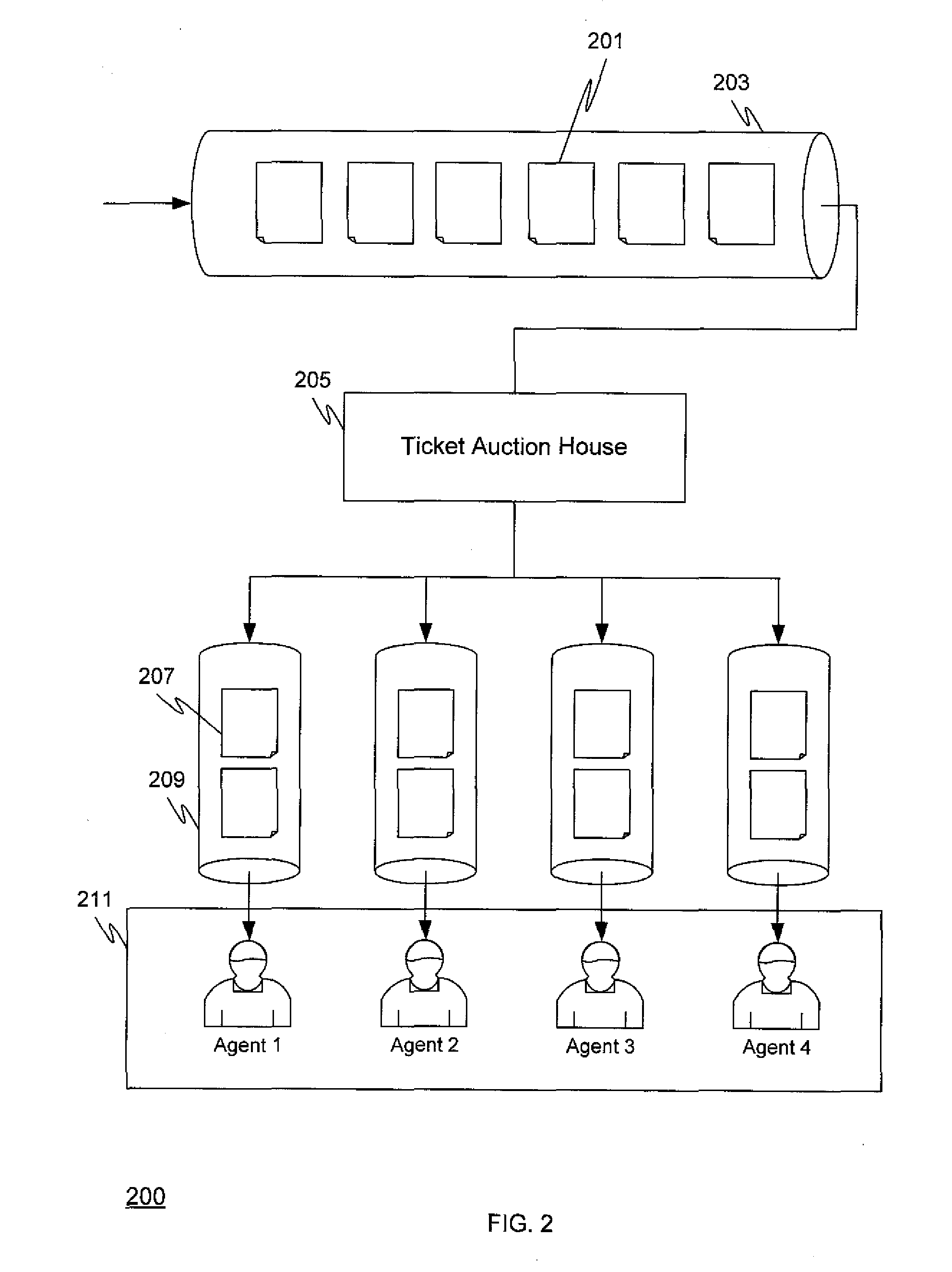Reverse Auction Based Pull Model Framework for Workload Allocation Problems in IT Service Delivery Industry
a pull model and workload technology, applied in the field of reverse auction allocation system, can solve the problems of inability to accurately estimate the workload of individual agents, the push model is not typically global or even national, and the manager is unable to keep track of the proficiencies of individual agents
- Summary
- Abstract
- Description
- Claims
- Application Information
AI Technical Summary
Problems solved by technology
Method used
Image
Examples
Embodiment Construction
[0017]FIG. 1 depicts a typical push model system 100 with limitations recognized by the present inventors. The push model 100 may be configured as a common mechanism across multiple service organizations for allocating problem tickets to the agents. The push model 100 includes a ticket queue 103 configured to hold the problems tickets 101. New problem tickets enter this queue at its entry tail, and proceed along in order until being assigned to a human manager 105 who keeps a watch at the head of the queue 103. The ticket at the head of the queue 103 is assigned to one of the agents 111 by the manager 105. The present inventors recognized the drawbacks due to the manager 105, since the manager 105 typically uses his / her own intuition, judgment, and past experience, sometimes applying predefined business rules in order to assign tickets to the agents. This manual push model method can be quite disadvantageous since it tends to rely on ad-hoc judgments that vary from manager to manage...
PUM
 Login to View More
Login to View More Abstract
Description
Claims
Application Information
 Login to View More
Login to View More - R&D
- Intellectual Property
- Life Sciences
- Materials
- Tech Scout
- Unparalleled Data Quality
- Higher Quality Content
- 60% Fewer Hallucinations
Browse by: Latest US Patents, China's latest patents, Technical Efficacy Thesaurus, Application Domain, Technology Topic, Popular Technical Reports.
© 2025 PatSnap. All rights reserved.Legal|Privacy policy|Modern Slavery Act Transparency Statement|Sitemap|About US| Contact US: help@patsnap.com



